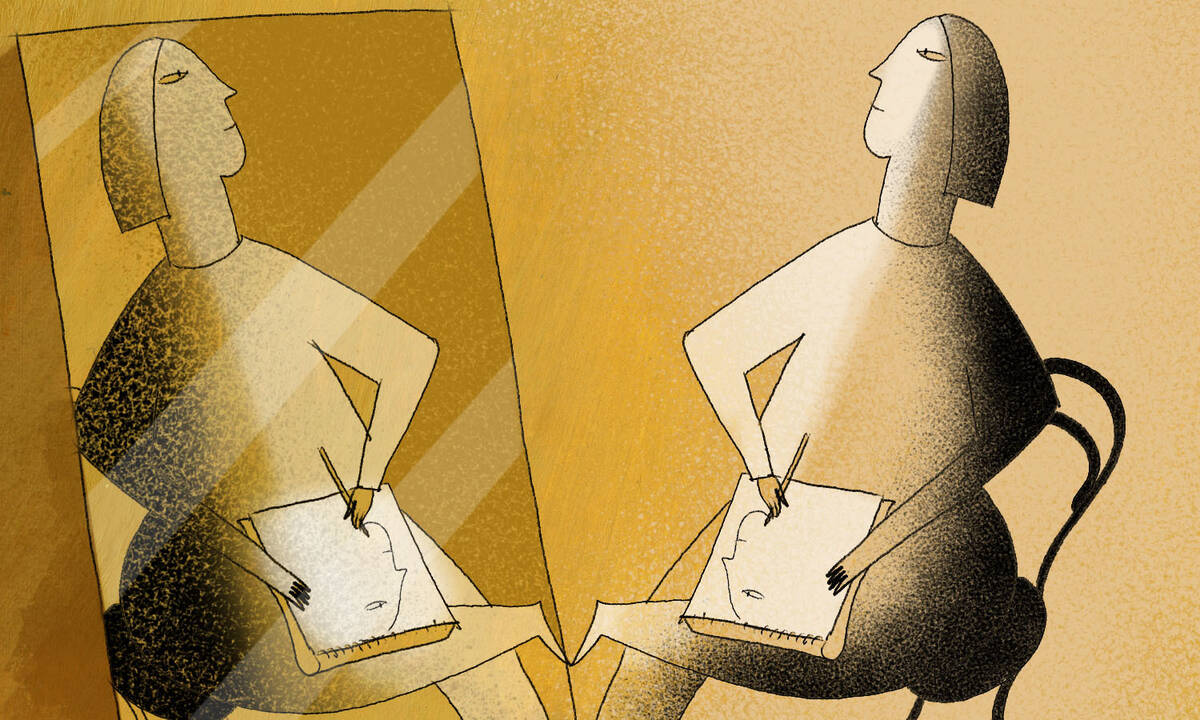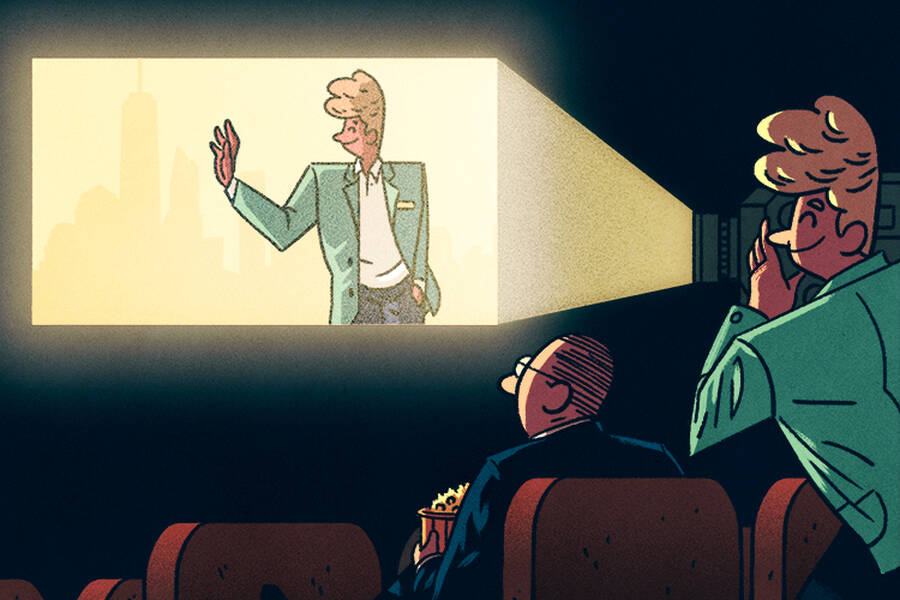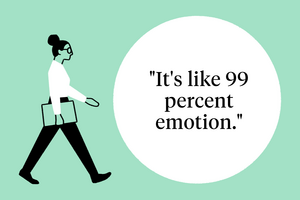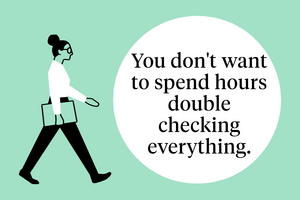Careers Feb 4, 2019
How to Feel Authentic While Building Your Personal Brand
Get beyond clichés like “adaptable” or “self-starter,” and learn to tell meaningful stories about yourself.
This audio is powered by Spokn.

Yevgenia Nayberg
For some people, self-promotion is analogous to a chore: we understand why it’s necessary, but we feel a little squeamish about it. Building a “personal brand” can seem contrived and inauthentic—even a little dishonest.
“People worry that selling themselves means giving a false impression,” says Suzanne Muchin, an adjunct lecturer in the Kellogg School’s architectures of collaboration initiative and co-host of the podcast The Big Payoff. “But nothing could be further from the truth. Great selling requires the purest form of authenticity.”
For Muchin, one important place this authenticity comes through is in the stories we choose to tell others about ourselves—stories that communicate our values, convictions, strengths, and goals.
“Whether you’re an entrepreneur, a job candidate, or an advocate for a new idea, good storytelling is one of the skills you need to stand out,” Muchin says.
Stories in service of your personal brand must be universal enough to work in a range of contexts. “Think of your personal brand as a portable suitcase—an authentic self that travels,” says Muchin.
But developing these stories is not exactly a straightforward task. How do we know where to start? And how personal is too personal? Muchin offers a few tips.
Turn Your Attributes into Stories
A common error most of us make when trying to sell ourselves is relying on lists of attributes to characterize our strengths. You know the ones: adaptable, creative, organized, a good communicator, a real self-starter.
“If you made a word cloud of the language people use to describe themselves,” Muchin says, “you would see how often we use the same boring nouns and adjectives.”
That’s why stories are so much more effective. It’s one thing to say you are adaptable; it’s another thing to describe the various life experiences that shaped your adaptability.
But a strong personal brand is not just about demonstrating your professional strengths. Muchin suggests asking yourself “What’s my unique value proposition to the person sitting across from me? What’s the promise I make to them when I walk in the room?” The most incisive question you can ask yourself is “What do I want to be memorable for?” If you ask that question—which is ultimately a version of “what makes me special?”—your stories will begin to surface.
“You need to be willing to get uncomfortable. It’s not just about being social. It’s about digging into your history to uncover what makes you unique.”
For example, on a recent episode of her podcast, Muchin featured “Office Hours” with a young professional who was interested in a career in healthcare, but was struggling to identify what made her especially equipped to stand out among her peers. In a real-time “ah hah” moment on the show, she recognized that her parents’ careers in that same industry (and at her current company) had shaped her most distinctive attribute: her confidence to enter any room with a level of professionalism and adaptability. By learning to tell that story in an authentic way, she was able to connect her personal history to a stand-out feature of her personal brand.
Be Willing to Get Uncomfortable
Sometimes, what makes us the choice for a specific opportunity is something very personal: our past experiences, for instance, or a deeply held belief. Yet many of us have an aversion to digging deep, which explains why so many fail to be authentic when selling themselves.
“The amount of self-awareness it requires to discover one’s unique story can make people uncomfortable,” Muchin says. “But that’s a necessary part of the process: you need to be willing to get uncomfortable. It’s not just about being social. It’s about digging into your history to uncover what makes you unique.”
This does not necessarily mean sharing your innermost secrets. The trick is to highlight parts of yourself that will help you connect with others on a professional level. Being honest can sometimes mean allowing yourself to be vulnerable, but you don’t want to overshare and make the other person uncomfortable.
For example, Muchin recently met a young professional who was honing his networking skills. He expressed that he loved the feeling of being “all in” on a project, and likened it to being inside a disciplined training regimen. It turned out that this student had competed in several triathlons and was currently training for another. But rather than bragging about being an “Iron Man,” or relating a flat-footed story about work ethic, he was able to incorporate his love of training and its application at work to share a memorable attribute and tell a memorable story.
Still, with storytelling, there are few hard and fast rules, and context is everything. It isn’t always easy to strike the balance between under- and oversharing on the spot, which is why it is so important to prepare ahead of time, Muchin says. If you do the work of self-discovery in advance, and come with a mental script, it will be easier to hit the sweet spot.
It will also help you to be present when the time comes to connect with others.
“Empathy is key in these situations,” she says, “and the only way to be empathetic is to be present. It’s easier to be present when you have confidence in your story.”
Have a Roadmap—and Be Disciplined
Once you’ve refined the stories that bolster your personal brand, the next challenge is learning how to weave them into conversations at job interviews, networking events, or any other situation where the goal is to sell yourself. Every answer you give is an opportunity to tell one of your stories.
“Whenever you enter a room, ask yourself ‘What conversation do I want to have?’ You need to have a roadmap for how to arrive at your story, and for how that story then leads you to a conversation that will engage others.”
Many scenarios call for some version of artful authenticity. Consider late-night television interviews, which are planned in advance but not entirely scripted. The goal is to give yourself the platform and the context in which to be your authentic self.
Muchin likens it to the approach she takes when she prepares to facilitate a panel or fireside chat. After plenty of preparation on the main points that she wants to make, as well as the stories she wants to either tell or bring out of others, Muchin spends time mapping out the “beats” of the conversation in advance rather than writing out “remarks” or a full script. “You want to be authentic, but you also need to be artful,” Muchin says. “And that requires discipline.”
Learn to Enjoy Sharing
Yes, developing a personal brand—and the stories that make it successful—can take some work. But the payoffs are not limited to your career. Muchin thinks people shouldn’t forget the intangible benefits of sharing our own subjective experience.
“Talking about ourselves in a certain way can be extremely rewarding—it stimulates brain activity and increases our dopamine levels,” she says. According to a 2012 study, sharing information about ourselves activates neural pathways associated with rewards—suggesting we find it inherently pleasurable to do.
“Storytelling mode is still our default setting, so it’s no surprise it’s the mode we’re in when we’re being the most authentic. But sometimes we need to remind ourselves how powerful it can be, and that we can all tap into it.”



